Repotting bonsai for the first time is not without an element of excitement. When the transition from trunk to roots is buried, it can take some work to find out what the nebari, or surface roots actually look like. And considering that the roots can be very important to the overall look and value of a tree, a lot may be riding on what lies beneath the soil.
Finding these surface roots is a good first step not just because it satisfies our curiosity, but because it helps us gauge how much of the remaining rootball needs to be removed. Sometimes it’s easy to remove the soil on the surface, but more often it takes a lot of scraping and cutting.
Having recently added two dwarf sawara cypress to my collection, I was anxious to repot them. The sooner I get them into bonsai soil, the sooner they’ll increase their vigor and the easier it will be to keep them healthy. Fall in Northern California is a good time to repot junipers and members of the Chamaecyparis family, so I took the opportunity last weekend to get a jump on the repotting season.
The first tree I worked on is a tsukumo cypress, Chamaecyparis pisifera ‘Tsukumo.’ No surface roots were visible when I started, and after over almost an hour of work, I’d only revealed two surface roots – good enough for now.
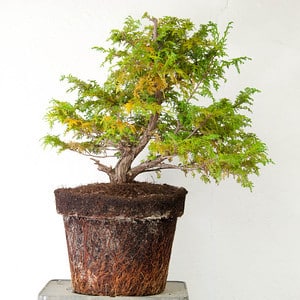
Tsukumo cypress
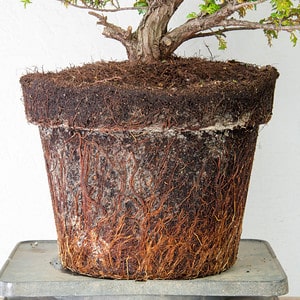
Large rootball – no surface roots in sight
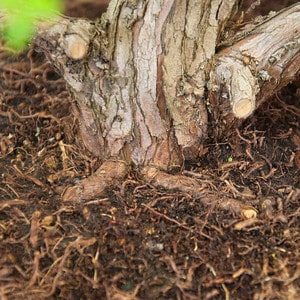
An hour later two surface roots appear
As you can see in the photo above, the soil was a tangle of small roots near the surface of the pot which made for slow work.
In contrast to this, the second tree I worked on, a very dwarf form of sawara cypress, Chamaecyparis pisifera ‘Plumosa Compressa,’ proved less difficult. Although it again took nearly an hour, I was able to find far more surface roots.
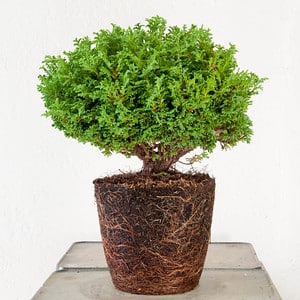
Dwarf sawara cypress – Chamaecyparis pisifera ‘Plumosa Compressa’
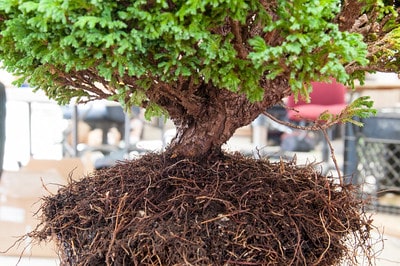
In search of surface roots
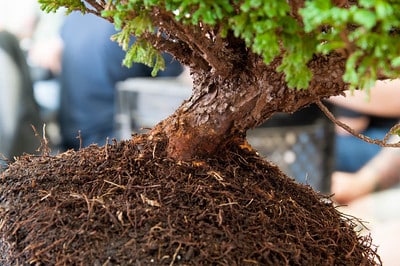
The trunk flares a bit
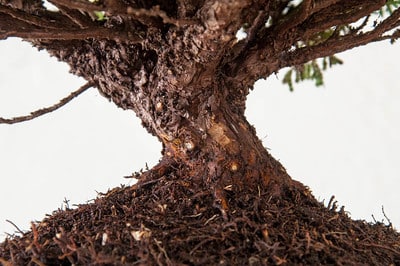
Surface roots at last!
After discovering the transition from trunk to roots I can now move on to the next step – reducing the rootball. More on this Friday.
Subscribe to Bonsai Tonight
New Posts Delivered Every Tuesday and Friday
John Demaegd says
What a tease! I really don’t understand the fall repotting? I think it is because of my Zone 5 location and the steady decline of the sun and growing here in Northern IN. We don’t have as much growing time left to support the recuperation needed to repott this time of year. Sure would like to take some of that away from spring.
gardengeri says
please describe your “work” to reveal nebari or surface roots. What tools do you use? how do you do it? Do you use a stream of water?
Jonas Dupuich says
I use bent nose tweezers and various root hooks to remove the surface of the soil. I don’t use water for root work on conifers. You can see a few more details here: http://bonsaitonight.com/2011/04/22/how-to-repot-a-young-japanese-black-pine-1-of-2/ or by browsing through these posts: http://bonsaitonight.com/tag/repotting/